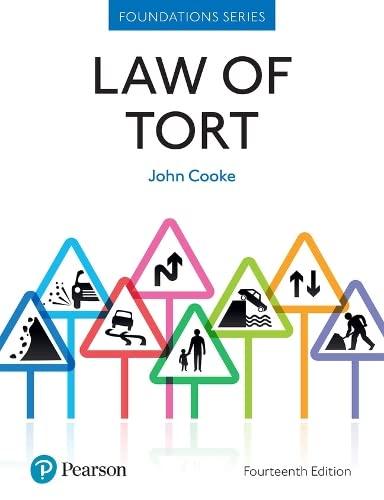Question
THE HOLLYWOOD CERAMICS-SHOPPING KART MERRY-GO-ROUND: WHERE WILL IT STOP? The text discusses propaganda and misrepresentation in elections to determine whether or not workers will have
THE HOLLYWOOD CERAMICS-SHOPPING KART MERRY-GO-ROUND: WHERE WILL IT STOP?
The text discusses propaganda and misrepresentation in elections to determine whether or not workers will have union representation. As you can see in what I posted below, there are two cases handled by the NLRB that reached different results. The NLRB decided on the position espoused inHollywood Ceramics.The NLRB reversed theHollywooddecision inShopping Kart Food Markets, Inc.Sometime later it reversed itself and went back toHollywood. It then reversed itself and went back toShopping Kartagain!
Below is an excerpt from an article discussingShopping KartandHollywood Ceramics.
Union election campaigns are often bitter contests in which truth is sometimes stretched beyond the point of recognition. The National Labor Relations Board has vacillated over the years in its regulation of this sensitive area. In the early days after the passage of the National Labor Relations Act, the NLRB did not strictly scrutinize campaign propaganda in union organizing drives. This general approach of non-involvement gradually gave way to various exceptions in which the NLRB decided that intervention was sometimes necessary to insure employees' free choice. The factors prompting Board intervention were finally summarized in the landmark Hollywood Ceramics Co.3 decision in 1962. In that case, the Board declared that a union election would be set aside when one party's substantial misrepresentation, that might have a significant impact on the election, was made so close in time to the election that the other party could not effectively reply.' The Hollywood Ceramics approach was increasingly criticized because the required subjective evaluation led to time consuming analysis of campaign propaganda and inconsistent application of the sanction. Finally, in the 1977 Shopping Kart Food Market, Inc. 5 decision, the Board reversed its position and declared that it would no longer inquire into the truth or falsity of campaign representations unless they involved the Board and its processes, or forgery, and rendered the voters unable to 1979 by Thomas J. O'Dowd. SANTA CLARA LAW REVIEW recognize the propaganda for what it was.6 This decision was premised on the belief that employees are more sophisticated now and no longer need the paternalistic protection of the Board. In December 1978, the Board, in General Knit of California, Inc.,' again reversed its position and decided to return to the Hollywood Ceramics standards. The majority believed that such an approach was more consistent with its overall goal of ensuring fair elections. This comment will trace the evolution of the law in union campaign misrepresentations and examine the two extreme positions taken by the NLRB in the past three years. It is suggested that neither position is entirely satisfactory and that a compromise of the two positions will better satisfy the needs of the competing parties.
Why do you think the NLRB has been so schizophrenic in this area and which position do you think is correct in deciding when the NLRB should intervene in a representative election issue? Why?
Step by Step Solution
There are 3 Steps involved in it
Step: 1

Get Instant Access to Expert-Tailored Solutions
See step-by-step solutions with expert insights and AI powered tools for academic success
Step: 2

Step: 3

Ace Your Homework with AI
Get the answers you need in no time with our AI-driven, step-by-step assistance
Get Started


